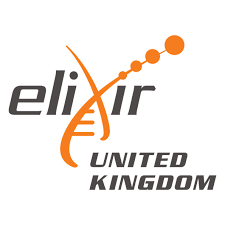GtoPdb is requesting financial support from commercial users. Please see our sustainability page for more information.
Contents:
- Gene and Protein Information
- Previous and Unofficial Names
- Database Links
- Transduction Mechanisms
- Tissue Distribution
- Physiological Consequences of Altering Gene Expression
- Phenotypes, Alleles and Disease Models
- Gene Expression and Pathophysiology
- Biologically Significant Variants
- General Comments
- References
- How to cite this page
Gene and Protein Information  |
||||||
| class A G protein-coupled receptor | ||||||
| Species | TM | AA | Chromosomal Location | Gene Symbol | Gene Name | Reference |
| Human | 7 | 478 | 10q23.2 | OPN4 | opsin 4 | 4 |
| Mouse | 7 | 521 | 14 B | Opn4 | opsin 4 (melanopsin) | 4 |
| Rat | 7 | 474 | 16p15 | Opn4 | opsin 4 | 2 |
| Gene and Protein Information Comments | ||||||
| Two receptor isoforms have been identified for the human and mouse opsin 4 proteins. The shorter isoforms are listed in the table above. So far only one rat isoform has been identified. | ||||||
Previous and Unofficial Names  |
| melanopsin | MOP |
Database Links  |
|
| Specialist databases | |
| GPCRdb | OPN4_HUMAN (Hs), OPN4_MOUSE (Mm), OPN4_RAT (Rn) |
| Other databases | |
| Alphafold | Q9UHM6 (Hs), Q9QXZ9 (Mm), Q8R456 (Rn) |
| Ensembl Gene | ENSG00000122375 (Hs), ENSMUSG00000021799 (Mm), ENSRNOG00000053893 (Rn) |
| Entrez Gene | 94233 (Hs), 30044 (Mm), 192223 (Rn) |
| Human Protein Atlas | ENSG00000122375 (Hs) |
| KEGG Gene | hsa:94233 (Hs), mmu:30044 (Mm), rno:192223 (Rn) |
| OMIM | 606665 (Hs) |
| Pharos | Q9UHM6 (Hs) |
| RefSeq Nucleotide | NM_001030015 (Hs), NM_033282 (Hs), NM_001128599 (Mm), NM_013887 (Mm), NM_138860 (Rn) |
| RefSeq Protein | NP_150598 (Hs), NP_001025186 (Hs), NP_038915 (Mm), NP_001122071 (Mm), NP_620215 (Rn) |
| UniProtKB | Q9UHM6 (Hs), Q9QXZ9 (Mm), Q8R456 (Rn) |
| Wikipedia | OPN4 (Hs) |
Primary Transduction Mechanisms 
|
|
| Transducer | Effector/Response |
|
Gi/Go family Gq/G11 family |
Adenylyl cyclase inhibition Phospholipase C stimulation |
| Comments: G protein coupling was assessed using heterologous expression in HEK293 cells and luminescent reporters for second messenger systems [1]. | |
| References: 1 | |
Tissue Distribution 
|
||||||||
|
||||||||
|
||||||||
| Tissue Distribution Comments | ||||||||
| OPN4 is also expressed in inner retina cells in the monkey [4]. | ||||||||
Physiological Consequences of Altering Gene Expression 
|
||||||||||
|
Phenotypes, Alleles and Disease Models 
|
Mouse data from MGI | ||||||||||||||||||||||||||||||
|
|||||||||||||||||||||||||||||||
| Gene Expression and Pathophysiology Comments | |
| Polymorphisms in the OPN4 gene have been found to be associated with seasonal affective disorder in humans [5]. |
Biologically Significant Variants 
|
||||||||||||||||||
|
| General Comments |
| Opsin 4 appears to be a component of occular, non-image forming light detection [6,8], and may be involved in sleep modulation and regulation of the circadian clock [7]. |
References
1. Bailes HJ, Lucas RJ. (2013) Human melanopsin forms a pigment maximally sensitive to blue light (λmax ≈ 479 nm) supporting activation of G(q/11) and G(i/o) signalling cascades. Proc Biol Sci, 280 (1759): 20122987. [PMID:23554393]
2. Hattar S, Liao HW, Takao M, Berson DM, Yau KW. (2002) Melanopsin-containing retinal ganglion cells: architecture, projections, and intrinsic photosensitivity. Science, 295 (5557): 1065-70. [PMID:11834834]
3. Lucas RJ, Hattar S, Takao M, Berson DM, Foster RG, Yau KW. (2003) Diminished pupillary light reflex at high irradiances in melanopsin-knockout mice. Science, 299 (5604): 245-7. [PMID:12522249]
4. Provencio I, Rodriguez IR, Jiang G, Hayes WP, Moreira EF, Rollag MD. (2000) A novel human opsin in the inner retina. J Neurosci, 20 (2): 600-5. [PMID:10632589]
5. Roecklein KA, Rohan KJ, Duncan WC, Rollag MD, Rosenthal NE, Lipsky RH, Provencio I. (2009) A missense variant (P10L) of the melanopsin (OPN4) gene in seasonal affective disorder. J Affect Disord, 114 (1-3): 279-85. [PMID:18804284]
6. Sexton T, Buhr E, Van Gelder RN. (2012) Melanopsin and mechanisms of non-visual ocular photoreception. J Biol Chem, 287 (3): 1649-56. [PMID:22074930]
7. Tsai JW, Hannibal J, Hagiwara G, Colas D, Ruppert E, Ruby NF, Heller HC, Franken P, Bourgin P. (2009) Melanopsin as a sleep modulator: circadian gating of the direct effects of light on sleep and altered sleep homeostasis in Opn4(-/-) mice. PLoS Biol, 7 (6): e1000125. [PMID:19513122]
8. van Oosterhout F, Fisher SP, van Diepen HC, Watson TS, Houben T, VanderLeest HT, Thompson S, Peirson SN, Foster RG, Meijer JH. (2012) Ultraviolet light provides a major input to non-image-forming light detection in mice. Curr Biol, 22 (15): 1397-402. [PMID:22771039]
How to cite this page
Opsin receptors: OPN4. Last modified on 15/07/2019. Accessed on 19/12/2025. IUPHAR/BPS Guide to PHARMACOLOGY, https://www.guidetomalariapharmacology.org/GRAC/ObjectDisplayForward?objectId=2758.






